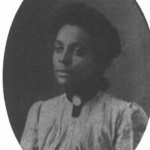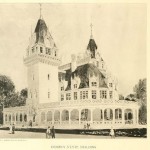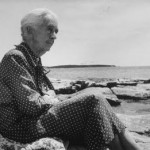While certainly a much-needed outlet for interaction and conviviality, women’s clubs of the nineteenth and early twentieth century had a far more serious function.
Coming into prominence in New England in the 1860s, the women’s club provided an opportunity for women not only to find companionship, but to advance their education beyond its usual terminus at the eighth-grade level, and to organize on behalf of civic causes from public health to the advancement of the arts.
By 1900, almost five per cent of all women nationwide were affiliated with a women’s club.
Women’s clubs began to appear early in Indiana state history. As early as 1825, the Female Social Society was founded in the short-lived utopian community of New Harmony.
Other early examples included the Edgeworthalean Society in Bloomington (1841) and the Clionian Society in Vernon (1858).
Several clubs had more staying power. The Zerelda Society (1886) of Warsaw, named for the wife of Indiana governor David Wallace, was committed to education for women; the Ladies’ Piano Club of Salem (1896) and Lebanon’s Florentine Club (1900) cultivated an appreciation for music and art, respectively.
Most of the women whose clubs were grouped within the Indiana State Federation of Women’s Clubs were upper-middle class white women with domestic help.
At the same time, though, black women, most of whom worked outside the home, were organizing into such groups as the Florence Nightingale Club and the Dressmakers Relief Club.
The Women’s Improvement Club was started in 1903 as a literary club for black women by journalist Lillian Thomas and physician Beulah Wright Porter but shifted its mission to address the treatment of tuberculosis and the training of black nurses.
Lillian Thomas went on to found the Indiana Federation of Colored Women’s Clubs, which was not associated with its counterpart in the white community, regardless of their mutual commitment to the causes of temperance and suffrage, among others.
Among those who decried the division between the groups was prominent Indianapolis suffragist May Wright Sewall, who spoke at the first convention of the black women’s federation.
This essay draws from the following source:
Owen, Mary. “A Popular Outlet for Spare Time: Indiana Women’s Clubs—Their Members and Activities Around the Turn of the Twentieth Century.” Connections: The Hoosier Genealogist (Spring/Summer 2009) 12-17.






















